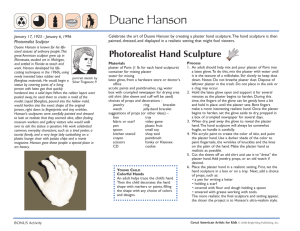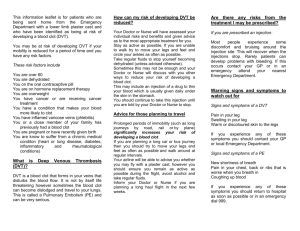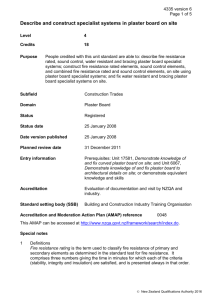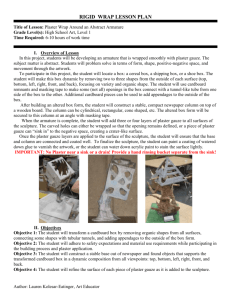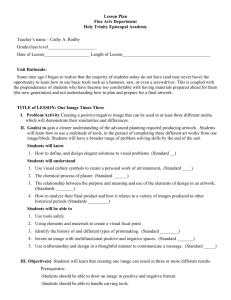FOSSIL MODELS
advertisement
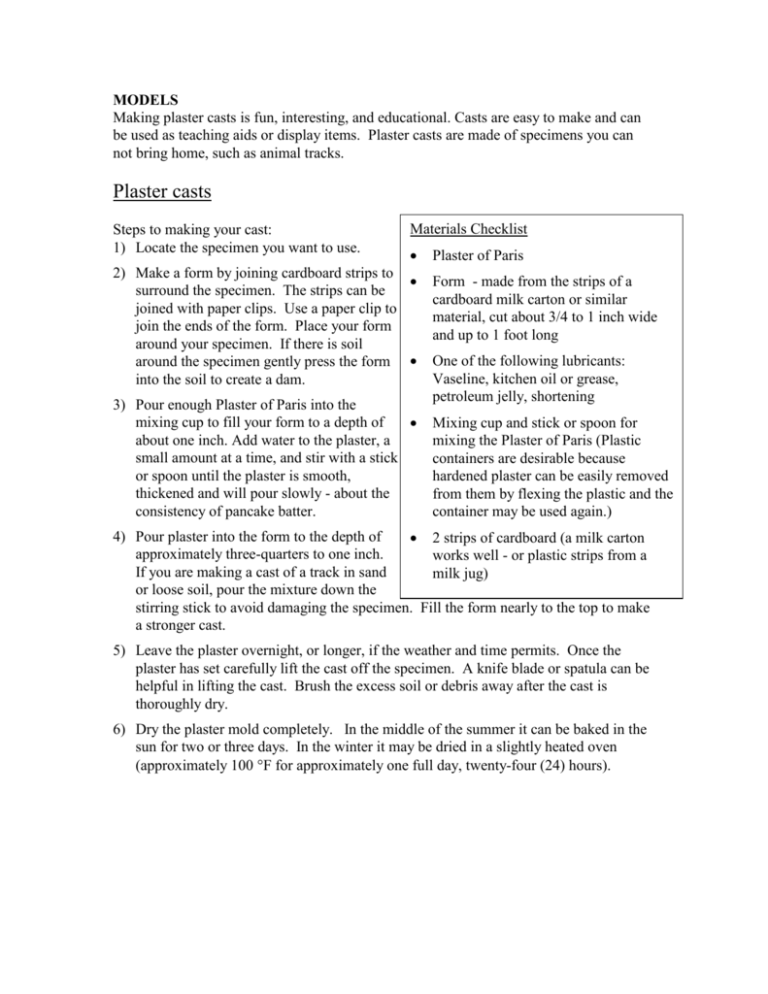
MODELS Making plaster casts is fun, interesting, and educational. Casts are easy to make and can be used as teaching aids or display items. Plaster casts are made of specimens you can not bring home, such as animal tracks. Plaster casts Steps to making your cast: 1) Locate the specimen you want to use. Materials Checklist 2) Make a form by joining cardboard strips to surround the specimen. The strips can be joined with paper clips. Use a paper clip to join the ends of the form. Place your form around your specimen. If there is soil around the specimen gently press the form into the soil to create a dam. 3) Pour enough Plaster of Paris into the mixing cup to fill your form to a depth of about one inch. Add water to the plaster, a small amount at a time, and stir with a stick or spoon until the plaster is smooth, thickened and will pour slowly - about the consistency of pancake batter. Plaster of Paris Form - made from the strips of a cardboard milk carton or similar material, cut about 3/4 to 1 inch wide and up to 1 foot long One of the following lubricants: Vaseline, kitchen oil or grease, petroleum jelly, shortening Mixing cup and stick or spoon for mixing the Plaster of Paris (Plastic containers are desirable because hardened plaster can be easily removed from them by flexing the plastic and the container may be used again.) 4) Pour plaster into the form to the depth of 2 strips of cardboard (a milk carton approximately three-quarters to one inch. works well - or plastic strips from a If you are making a cast of a track in sand milk jug) or loose soil, pour the mixture down the stirring stick to avoid damaging the specimen. Fill the form nearly to the top to make a stronger cast. 5) Leave the plaster overnight, or longer, if the weather and time permits. Once the plaster has set carefully lift the cast off the specimen. A knife blade or spatula can be helpful in lifting the cast. Brush the excess soil or debris away after the cast is thoroughly dry. 6) Dry the plaster mold completely. In the middle of the summer it can be baked in the sun for two or three days. In the winter it may be dried in a slightly heated oven (approximately 100 F for approximately one full day, twenty-four (24) hours).




![First Aid Training : Bronze [Power Point]](http://s2.studylib.net/store/data/005424634_1-e0b0e5e602f7c1666ebc2e9ff3f4a1b5-300x300.png)

